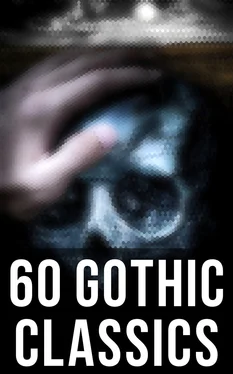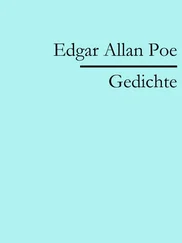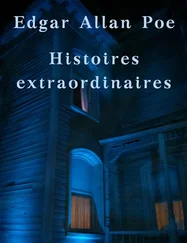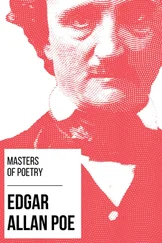44. ... dislodged Our language wants a verb, equivalent to the French dénicher , to convey, in this instance, the precise sense of the author.
45. ... those nocturnal insects which presage evil It is observable that, in the fifth verse of the Ninety-first Psalm, “the terror by night,” is rendered, in the old English version, “the bugge by night.” In the first settled parts of North America, every nocturnal fly of a noxious quality is still generically named a bug; whence the term bugbear signifies one that carries terror wherever he goes. Beelzebub, or the Lord of Flies, was an Eastern appellative given to the Devil; and the nocturnal sound called by the Arabians azif was believed to be the howling of demons.
46. ... the locusts were heard from the thickets on the plain of Catoul The insects here mentioned are of the same species with the τεττιξ of the Greeks, and the cicada of the Latins. The locusts are mentioned in Pliny, b. xi, 29. They were so called, from loco usto , because the havoc they made wherever they passed left behind the appearance of a place desolated by fire. How could then the commentators of Vathek say that they are called locusts , from their having been so denominated by the first English settlers in America?
47. Vathek ... with two little pages “All the pages of the seraglio are sons of Christians made slaves in time of war, in their most tender age. The incursions of robbers in the confines of Circassia afford the means of supplying the seraglio, even in times of peace.”—Habesci’s State of the Ottoman Empire , p. 157. That the pages here mentioned were Circassians , appears from the description of their complexion— more fair than the enamel of Franguestan .
48. ... confectioners and cooks What their precise number might have been in Vathek’s establishment it is not now easy to determine; but in the household of the present Grand Signior there are not fewer than a hundred and ninety.—Habesci’s State of the Ottoman Empire , p. 145.
49. ... hath seen some part of our bodies; and, what is worse, our very faces “I was informed,” writes Dr. Cooke, “that the Persian women, in general, would sooner expose to public view any part of their bodies than their faces.”— Voyages and Travels , vol. ii, p. 443.
50. ... vases of snow, and grapes from the banks of the Tigris It was customary in Eastern climates, and especially in the sultry season, to carry, when journeying, supplies of snow. These æstivæ nives (as Mamertinus styles them) being put into separate vases, were, by that means, better kept from the air, as no more was opened at once than might suffice for immediate use. To preserve the whole from solution, the vessels that contained it were secured in packages of straw.— Gesta Dei , p. 1098. Vathek’s ancestor, the Caliph Mahadi, in the pilgrimage to Mecca, which he undertook from ostentation rather than devotion, loaded upon camels so prodigious a quantity, as was not only sufficient for himself and his attendants amidst the burning sands of Arabia, but also to preserve, in their natural freshness, the various fruits he took with him, and to ice all their drink whilst he stayed at Mecca, the greater part of whose inhabitants had never seen snow till then.— Anecdotes Arabes , p. 326.
51. ... horrible Kaf This mountain, which, in reality, is no other than Caucasus, was supposed to surround the earth, like a ring encompassing a finger. The sun was believed to rise from one of its eminences (as over Œta, by the Latin poets), and to set on the opposite; whence, from Kaf to Kaf , signified, from one extremity of the earth to the other. The fabulous historians of the East affirm, that this mountain was founded upon a stone, called sakhrat , one grain of which, according to Lokman, would enable the possessor to work wonders. This stone is further described as the pivot of the earth, and said to be one vast emerald, from the refraction of whose beams the heavens derive their azure. It is added, that whenever God would excite an earthquake, he commands the stone to move one of its fibres (which supply in it the office of nerves), and, that being moved, the part of the earth connected with it quakes, is convulsed, and sometimes expands. Such is the philosophy of the Koran! The Tarikh Tabari , written in Persian, analogous to the same tradition, relates, that, were it not for this emerald, the earth would be liable to perpetual commotions, and unfit for the abode of mankind. To arrive at the Kaf, a vast region,
“Far from the sun and summer gale,”
must be traversed. Over this dark and cheerless desert, the way is inextricable without the direction of supernatural guidance. Here the dives or giants were confined, after their defeat by the first heroes of the human race; and here, also, the peris, or fairies, are supposed in ordinary to reside. Sukrage, the giant, was king of Kaf, and had Rucail, one of the children of Adam, for his prime minister. The giant Argenk, likewise, from the time that Tahamurath made war upon him, reigned here, and reared a superb palace in the city of Aherman, with galleries, on whose walls were painted the creatures that inhabited the world prior to the formation of Adam.—D’Herbelot, p. 230, etc.
52. ... the Simurgh This is that wonderful bird of the East, concerning which so many marvels are told: it was not only endowed with reason, but possessed also the knowledge of every language. Hence it may be concluded to have been a dive in a borrowed form. This creature relates of itself that it had seen the great revolution of seven thousand years twelve times commence and close; and that, in its duration, the world had been seven times void of inhabitants, and as often replenished. The Simurgh is represented as a great friend to the race of Adam, and not less inimical to the dives. Tahamurath and Aherman were apprised by its predictions of all that was destined to befall them, and from it they obtained the promise of assistance in every undertaking. Armed with the buckler of Gian Ben Gian, Tahamurath was borne by it through the air, over the dark desert, to Kaf. From its bosom his helmet was crested with plumes, which the most renowned warriors have ever since worn. In every conflict the Simurgh was invulnerable, and the heroes it favoured never failed of success. Though possessed of power sufficient to exterminate its foes, yet the exertion of that power was supposed to be forbidden. Sadi, a serious author, gives it as an instance of the universality of Providence, that the Simurgh, notwithstanding its immense bulk, is at no loss for sustenance on the mountain of Kaf. Inatulla hath described Getiafrose, queen of the Genii, as seated on a golden chariot, drawn by ten simurghs; whose wings extended wide as the earth-shading bir, and whose talons resembled the proboscis of mighty elephants: but it does not appear from any other writer, that there ever was more than one , which is frequently called the marvellous gryphon , and said to be like that imaginary monster.—D’Herbelot, p. 1017, 810, etc. Tales of Inatulla , vol. ii, pp. 71, 72. As the magic shield of Atlante resembles the buckler of Gian Ben Gian , so his Ippogrif apparently came from the Simurgh , notwithstanding the reference of Ariosto to the veridical Archbishop:
“Non ho veduto mai, nè letto altrove,
Fuor che in Turpin, d’un si fatto animale.”
53. ... palampores, etc. These elegant productions, which abound in all parts of the East, were of very remote antiquity. Not only are σινδονας ΕΥΑΝΘΕΙΣ, finely flowered linens , noticed by Strabo; but Herodotus relates, that the nations of Caucasus adorned their garments with figures of various creatures , by means of the sap of certain vegetables; which, when macerated and diluted with water, communicate colours that cannot be washed out, and are no less permanent than the texture itself.—Strabo, l. xv, p. 709. Herodotus, l. i, p. 96. The Arabian Tales repeatedly describe these “ fine linens of India, painted in the most lively colours , and representing beasts , trees , flowers , etc.”— Arabian Nights , vol. iv, p. 217, etc.
Читать дальше












